The Inupiaq are members of the larger Inuit culture, which spans the entire northern coasts of Alaska and Canada, as well as Greenland on the whole. Inupiaq people live as far south as Unalakleet, north as Barrow, west as Little Diomede Island, and east as Barter Island. Inupiaq elders stress the importance of Inupiaq as a language, in order to understand the Inupiaq as a culture. Subsistence hunting and gathering are still important aspects of Inupiaq life, as the cash economy in Inupiaq villages is of little worth to the people. Both the inland and coastal Inupiaq depend greatly on fish. Ducks, geese, rabbits, berries, roots, and shoots are also food staples throughout the seasons where they are available. The inland Inupiaq also hunt caribou, dall sheep, mountain sheep, brown bear, grizzly bear and moose, where the coastal Inupiaq hunt walrus, seals, beluga whales and bowhead whales. Polar bear is also cautiously hunted.
Traditionally, there were many reasons for dancing. There were spiritual ceremonies where a shaman could communicate with the spirit world through his/her dances and songs. Shamans could heal the ill, call the animal spirits to request a good hunting season and perform magical tricks to demonstrate his/her powers. People also danced after a successful hunting season to express gratitude, and celebrations after a successful bowhead whale hunt last for days. Other dances were held at trade fairs, where people gathered to trade goods. This fostered good relations between villages, where people would dance in happiness of being together, create new dances, show off, or learn the dances of other groups. Dances tell stories of hunts and other experiences. Some are humorous and some serious. The most important reason for dancing, however, is to pass on the Inupiaq culture to future generations through the message of the dance.

